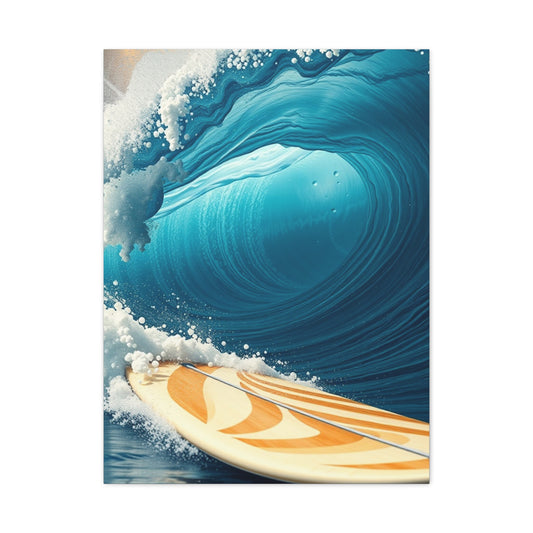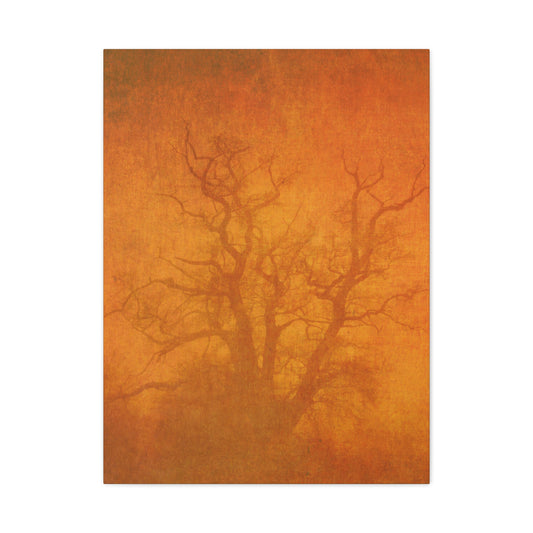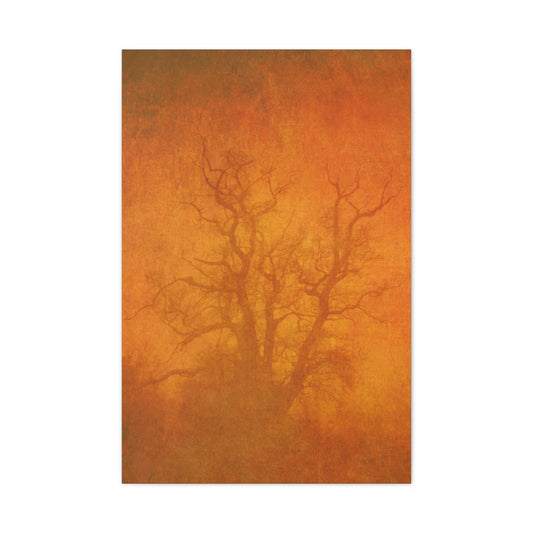When it comes to capturing stunning images and high-definition videos, memory cards play an essential role in storing the digital files that we create. Digital cameras, whether DSLR, mirrorless, or point-and-shoot, rely on memory cards to hold all the pictures and videos you capture. However, with various types of memory cards available in the market, it’s important to understand their features and how they suit your camera's specifications and your photography needs.
Why Do We Have Different Memory Card Types?
The variety of memory card types is not merely a result of technological advancement but stems from the diverse needs and design specifications of the cameras themselves. Just as cameras have different types of lens mounts, battery sizes, and other features, memory cards come in a wide array of shapes, sizes, and capacities to meet specific needs. The fact that different camera manufacturers and devices use different types of memory cards is rooted in their unique specifications, design, and performance requirements.
Memory cards serve as the primary medium for storing data captured by digital cameras, smartphones, drones, and other devices. Whether you're a professional photographer, a casual user, or someone who enjoys taking videos with a smartphone, the type of memory card you use will have a significant impact on your photography experience. Understanding the reasons behind the different types of memory cards can help users make the right choice based on their specific needs and device compatibility.
The Role of Camera Manufacturers and Their Specifications
Different camera manufacturers design their products with distinct specifications that dictate the kind of memory cards they require. In fact, many of the unique attributes found in digital cameras, such as lens mounts, flange distances, and battery types, also influence which memory cards are compatible with them. This is why manufacturers like Canon, Nikon, Sony, and Olympus all have different preferences for memory card types.
For instance, Canon often favors CompactFlash (CF) cards for their higher-end DSLRs, while other manufacturers such as Nikon and Panasonic tend to opt for the smaller and more compact Secure Digital (SD) cards. This variation arises from a number of factors, including how each camera is designed to handle data processing and storage. Larger formats like CF cards can offer more room for high-speed data transfers, which is crucial for certain photography tasks like continuous burst shooting and recording high-resolution video. Smaller formats like SD cards, on the other hand, provide enough space for the everyday user while being more affordable and accessible.
For many photographers, camera manufacturers will provide a clear indication of which type of memory card should be used for optimal performance. Understanding these camera specifications can make a world of difference when selecting the right memory card. Incompatible memory cards may not only result in poor performance but could potentially lead to corrupted files and unreliable data storage.
Technological Advancements in Memory Cards
The technological advancements in memory card design and speed have also led to the development of several types of cards, each optimized for different applications. As cameras have become more advanced, the demand for faster memory cards has surged. This is particularly true for high-end digital cameras used by professional photographers who require high-speed data processing capabilities. Sports photographers, wildlife photographers, and videographers often rely on faster memory cards for capturing high-speed shots or recording 4K and even 8K video. These faster memory cards are essential for ensuring that the camera can store the massive amounts of data generated during these high-speed photography sessions.
For example, memory cards used in high-end DSLRs and mirrorless cameras need to handle data at speeds much faster than entry-level models. These professional memory cards are often rated with higher read and write speeds, enabling them to store large image files, especially in RAW format, or record uninterrupted 4K footage. The introduction of UHS (Ultra High Speed) cards with UHS-I and UHS-II specifications, for example, has made it possible for cameras to shoot in continuous burst mode without the card lagging behind. Without such advancements, professional photographers and videographers would be forced to wait for data to be written to slower memory cards, potentially missing crucial moments.
The Need for Compatibility in Memory Card Selection
Choosing the best memory card for your camera goes beyond just storage capacity; it requires considering several other factors such as data transfer speed, card format, and compatibility with your camera’s specifications. With so many memory card types available, it is essential to ensure that the card you purchase is compatible with your camera model.
For instance, a camera that supports UHS-I cards will not benefit from the faster read and write speeds of a UHS-II card, as the camera itself is not built to handle those speeds. Similarly, some cameras might only accept certain types of SD cards, such as SDHC (Secure Digital High Capacity) or SDXC (Secure Digital Extended Capacity), and will not support other formats like CompactFlash cards. This is why it is crucial to always check your camera's manual or product specifications before buying a memory card.
In many cases, memory cards of different types are designed to serve specific functions. For example, the smaller form factor of a MicroSD card allows it to be used in portable devices like smartphones, action cameras, or drones. When paired with an adapter, however, a MicroSD card can be used in devices that typically use full-sized SD cards. While MicroSD cards are perfect for mobile devices, larger formats like CF and SD cards are better suited for professional cameras that need more storage space and faster write speeds.
Different Memory Cards for Different Needs
Memory cards come in a range of sizes and speeds, and selecting the right one depends heavily on what you plan to use it for. For casual photographers or travelers, a standard SD card might be all that is needed, offering a good balance of storage and performance at an affordable price point. These cards are perfect for shooting in JPEG format or taking videos in HD. However, for professionals who require faster data processing for RAW images or high-definition video, selecting a faster card like SDXC or CF with higher capacities and UHS-I or UHS-II speed ratings will be a wise choice.
Storage capacity is another critical factor to consider when choosing a memory card. For a photographer or videographer who regularly shoots large image files, such as RAW files, or records in 4K video, selecting a high-capacity memory card is essential. Memory cards are available in a range of capacities, with some SDHC cards offering up to 64 GB, SDXC cards offering up to 2 TB, and CF cards often topping out at even higher capacities. However, while larger cards offer more storage, they also come with the downside that if lost, more data is at risk of being lost in one fell swoop.
For users working with video, write speed is a particularly important consideration. When recording high-definition video, especially in 4K or 8K formats, it is essential that the memory card is able to write data fast enough to keep up with the camera's recording requirements. Look for cards with higher write speeds and UHS ratings (UHS-1, UHS-2, or UHS-3), especially when capturing continuous or high-speed video.
Memory Card Speed Classes and Their Importance
Speed classes, such as Class 10, UHS-1, and UHS-3, help determine how fast a memory card can write data. For professional use, where high-speed photography is a priority, higher class cards will ensure that large data files are transferred quickly and efficiently. For example, UHS-1 cards have a minimum write speed of 10 MB/s, which is sufficient for capturing HD video, while UHS-3 cards can achieve speeds up to 30 MB/s, making them ideal for 4K video recording.
The UHS-II and UHS-III standards allow for even faster speeds, ensuring that professionals who shoot high-resolution stills or video in rapid bursts don’t experience delays while writing to the card.
The Most Common Types of Memory Cards
Here is a breakdown of the most popular memory card types you’ll encounter when using digital cameras:
1. CompactFlash (CF) Cards
CompactFlash (CF) cards have long been a favorite among professional photographers, especially those working with high-end digital SLR (DSLR) cameras. These memory cards stand out due to their larger physical size and superior performance capabilities compared to more common card types like SD cards. Measuring approximately 43mm x 36mm, CF cards are notably larger than the standard Secure Digital (SD) cards, which makes them more suitable for advanced photography tasks that require faster data transfer and larger storage capacities.
CF cards are typically favored by professionals for their high read and write speeds, which are essential for rapid data capture during demanding photography sessions. High-speed data transfer is particularly important for fast-paced photography genres such as sports, wildlife, and action photography. In these fields, every second counts, and the ability to write large files, such as RAW images or 4K video, without delays is crucial. These high-speed cards ensure that photographers can capture every moment without missing a shot due to buffering or slow data processing.
Another key advantage of CF cards is their ability to handle large file sizes. While SD cards may struggle with the demands of high-resolution images and long video recordings, CF cards can easily store these large files, making them ideal for professional work. They are available in capacities ranging from 1 GB to over 256 GB, allowing photographers to store thousands of high-quality photos or hours of video footage. This ample storage capacity ensures that photographers can shoot for extended periods without worrying about running out of space, making CF cards an excellent choice for events like weddings, sports competitions, and long photo shoots.
In addition to their speed and capacity, CF cards are known for their durability, making them suitable for use in harsh and demanding environments. For photographers working in challenging conditions, such as extreme weather or rugged outdoor locations, CF cards offer reliability and performance that is hard to beat. Their robust construction ensures they can withstand rough handling and environmental conditions better than some other types of memory cards, making them a go-to choice for professionals in the field.
Because of their larger size, CF cards tend to be used in more advanced DSLRs and professional video cameras. While they may not be as commonly used in consumer-level cameras, their high performance makes them a crucial tool for those who require maximum speed and storage for professional-grade work. For photographers and videographers who need to work with high-resolution media, CF cards provide the performance and capacity to meet their demanding needs.
2. Secure Digital (SD) Cards
The Secure Digital (SD) card is one of the most ubiquitous and widely used memory cards across a variety of digital devices, including cameras, smartphones, tablets, laptops, and even some audio devices. SD cards are a standard memory format that most entry-level and mid-range digital cameras support, making them an essential storage medium for everyday photography and video recording. With dimensions of 32mm x 24mm x 2.1mm, the SD card is a compact and lightweight solution, offering a balance between performance, affordability, and versatility.
For casual photographers or hobbyists, SD cards are often the go-to choice. They offer an excellent combination of price, capacity, and speed that caters to the needs of most users. Whether you're capturing family moments, vacation photos, or casual videos, an SD card provides ample storage and reliable performance without breaking the bank. These cards are commonly used in consumer-level digital cameras, where ease of use and budget considerations are paramount.
The storage capacity of a standard SD card is typically limited to 4 GB, making them well-suited for everyday photography where file sizes are not excessively large. However, for photographers looking to capture higher-resolution images or shoot high-definition video, the standard SD card may not be sufficient. In these cases, the development of enhanced SD card formats like SDHC (Secure Digital High Capacity) and SDXC (Secure Digital Extended Capacity) has filled the gap by offering larger capacities and faster read/write speeds.
While SD cards are a reliable option for most users, they can encounter limitations when dealing with large files, such as RAW images or 4K video recordings. This limitation stems from the card’s relatively slower data transfer speeds and limited storage capacity compared to more professional card formats like CompactFlash or SDXC. If you're looking to capture images with high megapixel counts, shoot continuous burst mode shots, or record extended 4K footage, you may find that an SD card's performance is not optimal for these demanding tasks.
For many users, however, this limitation is not an issue. SD cards remain a highly versatile and accessible option, suitable for everyday users who need a dependable memory card for standard photography and video tasks. The widespread use of SD cards means they are widely available and come in various brands, allowing consumers to choose a card that meets their needs and budget. Their lower price point compared to more advanced cards like CF or SDXC also makes them a popular choice among budget-conscious photographers and casual users.
In addition to their affordability, SD cards are also available in different speed classes, allowing you to choose a card that best suits your needs. For instance, Class 2 SD cards have a minimum write speed of 2 MB/s, while Class 10 cards provide faster write speeds of 10 MB/s, making them ideal for HD video recording and continuous image capture. For higher-end tasks, UHS-I and UHS-II SD cards are available, offering even faster speeds, with UHS-II cards reaching speeds of up to 312 MB/s. These speed classes are important to consider when choosing the right SD card, as they determine how quickly data can be written to and read from the card, which can affect how quickly you can capture multiple images or record video.
While SD cards may not provide the same level of performance as CF or SDXC cards, they are still a highly popular choice among consumers due to their versatility, ease of use, and affordable price. For everyday photographers, casual video recording, and general-purpose photography, an SD card is often all that's needed to meet your storage needs. If you're shooting in standard resolution or Full HD video, an SD card offers more than enough capacity and speed to get the job done.
3. SDHC (Secure Digital High Capacity) Cards
The introduction of SDHC (Secure Digital High Capacity) cards marked a significant leap in digital memory card technology, catering to the growing need for more storage capacity and faster read and write speeds. SDHC cards, which are an evolution of the standard SD card format, offer storage capacities that range from 4 GB to 64 GB. This makes them an excellent choice for users who require more storage space for their high-definition photos and videos but do not need the extremely large capacities offered by more advanced formats like SDXC. SDHC cards have become an essential component for most consumer-grade digital cameras, providing an ideal balance of performance and affordability for everyday photography.
One of the key features of SDHC cards is their ability to store larger files compared to the original SD cards, making them perfect for tasks like recording Full HD videos or capturing high-resolution images. As the demand for higher-quality content has grown, SDHC cards have been able to keep up by offering reliable performance in a range of consumer devices. Whether you are shooting video at 1080p resolution or taking high-quality images in JPEG or RAW formats, SDHC cards are versatile enough to handle the demands of both still photography and video recording.
The read and write speeds of SDHC cards vary, but they generally offer speeds of up to 10 MB/s or more, depending on the specific card and its classification. This makes SDHC cards a great choice for standard video recording and still photography, where continuous image capture or moderate video recording is required. For example, if you’re recording high-definition video on a consumer-grade camera or smartphone, an SDHC card will provide the speed needed to avoid dropped frames or buffering issues. Similarly, for photographers who shoot in burst mode or need to rapidly write multiple images, the speed offered by an SDHC card ensures smooth performance without lag.
SDHC cards are also available in various speed classes, which determine the minimum sustained write speed. These include Class 2, Class 4, Class 6, and Class 10, with Class 10 being the most common for modern devices. Class 10 cards guarantee a minimum sustained write speed of 10 MB/s, making them particularly suitable for tasks such as video recording at Full HD resolution or capturing high-quality images in burst mode. This makes SDHC Class 10 cards an excellent choice for users who shoot a lot of videos, especially for those recording at higher resolutions such as 1080p.
While SDHC cards are more than capable of handling most consumer-level photography and video needs, they do have limitations when it comes to capturing very large files, such as RAW images or 4K video footage. For professional photographers or videographers working with very large files, it may be necessary to look beyond SDHC cards and consider other formats, such as SDXC or CompactFlash (CF) cards, which provide much larger storage capacities and faster data transfer speeds. For example, shooting 4K video or working with large, uncompressed RAW image files will demand the higher performance levels of SDXC cards.
4. SDXC (Secure Digital Extended Capacity) Cards
SDXC (Secure Digital Extended Capacity) cards are the next step in the evolution of SD cards, offering much larger storage capacities and faster data transfer speeds compared to SD and SDHC cards. While SDHC cards are available in capacities ranging from 4 GB to 64 GB, SDXC cards begin at 64 GB and can go up to a staggering 2 TB, making them the ideal choice for professional photographers, videographers, and content creators who require high-performance memory cards for shooting large files, including raw images and 4K or even 8K video footage.
The higher storage capacity of SDXC cards makes them invaluable for professional-grade photography and videography. When shooting high-resolution images or recording long-duration videos, storage space can quickly become an issue. SDXC cards alleviate this concern by offering much larger capacities, allowing photographers and videographers to store hundreds or thousands of high-quality images or hours of video without needing to constantly swap cards. This makes SDXC cards particularly advantageous for photographers who work in the field, such as wildlife or sports photographers, where access to backup storage may be limited.
In addition to offering vast storage capacity, SDXC cards also provide faster read and write speeds, which are essential for professional-level photography and videography. SDXC cards typically offer a minimum sustained write speed of 30 MB/s for Class 3 versions, making them suitable for continuous video recording, burst shooting, and capturing large raw image files without performance degradation. This speed is essential for those who shoot high-definition video at high bitrates or capture high-resolution stills in rapid succession, as the faster write speeds ensure that images are written to the card quickly and without delay.
Because of their speed and large capacity, SDXC cards are also ideal for recording high-definition videos in 4K and beyond. Recording long-form 4K video or shooting in high frame rates requires a memory card that can handle large data transfers without skipping frames or causing interruptions. The robust performance of SDXC cards ensures that video recording remains smooth and uninterrupted, even in demanding situations. Whether you're shooting a full-length film, recording a sports event, or capturing high-speed action in nature, an SDXC card can handle the data-heavy demands of modern video production.
One of the major advantages of SDXC cards is their ability to future-proof your equipment. As technology continues to evolve, the demand for higher storage capacities and faster data transfer speeds will only increase. SDXC cards are designed to meet these needs, offering the ability to handle next-generation video formats, higher resolution photos, and more extensive data requirements. For anyone looking to invest in a memory card that can handle the demands of both current and future technologies, SDXC cards are an excellent choice.
For users who shoot both photos and videos, SDXC cards are perfect for storing large video files and still images simultaneously. Many professional-level cameras and camcorders, such as those used in filmmaking, documentary production, and news coverage, are designed to work seamlessly with SDXC cards. These cards are compatible with a wide variety of devices, making them a versatile option for both photography and videography.
Speed and Reliability of SDXC Cards
Speed is one of the most important factors when selecting a memory card, especially for professional use. SDXC cards come with varying speed class ratings that help users understand the minimum sustained write speed. The most common speed classes for SDXC cards include UHS-I, UHS-II, and UHS-III, with UHS-II and UHS-III providing much faster data transfer rates compared to UHS-I. UHS-II cards can achieve speeds of up to 312 MB/s, making them ideal for 4K video recording and high-speed continuous shooting, while UHS-I cards generally reach speeds of up to 104 MB/s.
Reliability is also a key factor when choosing a memory card. SDXC cards are built to be durable, offering shock resistance, water resistance, and temperature endurance, ensuring that your files are safe even in harsh conditions. For photographers and videographers who work in rugged environments or extreme weather conditions, this level of durability is a must-have feature.
5. MicroSD Cards
MicroSD cards are a smaller variant of the traditional SD cards, measuring only 15mm x 11mm x 1mm, and are specifically designed to meet the needs of portable devices where space is limited. These tiny but powerful memory cards are found in a wide range of electronic devices, including smartphones, tablets, action cameras, drones, and many other portable gadgets. The compact size of MicroSD cards allows them to provide essential storage in devices that require smaller components without sacrificing functionality.
One of the primary reasons for the widespread use of MicroSD cards is their versatility. Despite their small form factor, MicroSD cards offer impressive storage capacities and high-speed data transfer rates. The advancement of memory card technology has made it possible for these miniature cards to store large files, such as HD videos, high-resolution images, and even raw photo files. For many modern devices, such as smartphones or action cameras like GoPro, a MicroSD card is often the only storage solution available due to size constraints. With the rapid growth of mobile content creation, including video recording in high-definition and even 4K, MicroSD cards are well-equipped to handle such demands.
MicroSD cards are available in several variations: MicroSD, MicroSDHC, and MicroSDXC. Each type corresponds to different capacities and speed capabilities, catering to various levels of performance and storage needs. For example, a basic MicroSD card might have limited storage, suitable for casual use like music or simple data storage, while MicroSDHC and MicroSDXC cards offer much larger capacities and faster speeds, making them perfect for high-performance applications like shooting 4K videos or capturing fast-moving subjects in action photography.
The versatility of MicroSD cards goes beyond just smartphones and action cameras. Many modern drones, for instance, rely on MicroSD cards for recording high-definition video footage and storing images. Drones, by their nature, need compact storage solutions, as they are lightweight and often require memory cards that fit in tight spaces while also providing enough speed to handle the large amounts of data generated during flight. MicroSD cards provide the perfect solution for these use cases, offering quick data writing speeds and large storage capacities in a small, durable form.
Furthermore, with the development of faster transfer speeds and better capacities, MicroSD cards are now capable of recording 4K video at high bitrates, which would have been unthinkable just a few years ago. For videographers and content creators working on the go, MicroSD cards have become an indispensable tool in their storage arsenal. Many smartphones now rely on high-capacity MicroSDXC cards, which can store up to 2 TB of data, allowing users to store vast amounts of high-definition video and large photo libraries without worrying about running out of space.
One of the significant advantages of MicroSD cards is their ability to fit into a wide range of devices, from mobile phones to tablets and portable gaming consoles. For photographers who use their smartphones as their primary camera, a MicroSD card provides a convenient way to store and transfer media between devices. Many smartphones have built-in support for MicroSD cards, allowing users to easily expand their storage for photos, videos, and apps without relying solely on internal storage. This makes MicroSD cards a highly convenient option for mobile photographers and videographers who need to store large files quickly and access them across different platforms.
Despite their smaller size, MicroSD cards have evolved significantly to support faster read and write speeds. Modern MicroSD cards are often designed to support UHS-I (Ultra High Speed) or UHS-II standards, which significantly improve the speed at which data can be written to and read from the card. UHS-I cards are capable of speeds of up to 104 MB/s, while UHS-II cards can achieve even faster speeds, making them ideal for applications requiring rapid data transfer, such as high-speed video capture and continuous burst photography. As such, MicroSD cards are now just as capable as larger SD cards in terms of performance, ensuring that they can handle demanding tasks with ease.
Another important consideration when using MicroSD cards is their compatibility with different devices. As more manufacturers include MicroSD card slots in their devices, users must ensure that their cards are compatible with their specific gadgets. While most modern devices support MicroSDHC and MicroSDXC cards, older devices may only support the standard MicroSD format, which is limited in capacity and speed. Therefore, it’s essential to verify the compatibility of the device before purchasing a new card. In some cases, using an adapter, such as a MicroSD-to-SD adapter, allows users to use their MicroSD cards in devices with SD card slots, further increasing the flexibility of these cards.
6. MicroSDHC Cards
MicroSDHC cards, or MicroSD High Capacity cards, are an upgraded version of the standard MicroSD card. They offer enhanced storage capacities and faster read and write speeds, making them ideal for use in smartphones, action cameras, drones, and other portable devices. MicroSDHC cards can support storage capacities ranging from 4 GB to 32 GB, providing an excellent solution for users who need more space for their media files without resorting to the larger MicroSDXC cards.
The increase in storage capacity in MicroSDHC cards over regular MicroSD cards allows users to store larger amounts of data, including HD video recordings, high-quality images, and apps. With modern smartphones and action cameras generating larger files due to high-resolution sensors, it’s crucial to have enough storage space to accommodate these files. MicroSDHC cards can easily handle these tasks, making them a suitable option for everyday photographers and videographers who require more storage than what a standard MicroSD card can offer.
For users interested in video recording, especially HD or Full HD (1080p) footage, MicroSDHC cards offer fast data transfer speeds that can handle these larger files. MicroSDHC cards are typically available with a Class 4, Class 6, or Class 10 speed rating. Class 10 MicroSDHC cards are particularly popular for HD video recording, as they offer a minimum sustained write speed of 10 MB/s, ensuring smooth video recording without frame drops or buffering. This makes MicroSDHC cards ideal for use in action cameras like GoPro, where high-definition video capture is essential.
In addition to their speed and storage capacity, MicroSDHC cards are compact and portable, making them easy to carry and use across different devices. Whether you’re recording a video on your action camera, storing music on your smartphone, or saving high-resolution photos on your tablet, MicroSDHC cards provide the storage space and speed required to keep your content safe and easily accessible.
When using MicroSDHC cards, it’s important to ensure that your device supports the card format, as not all devices are compatible with every type of memory card. Some older devices may not support MicroSDHC cards and may require the use of standard MicroSD cards instead. As with all memory cards, checking your device’s specifications is essential to avoid compatibility issues.
7. MicroSDXC Cards
MicroSDXC cards are the latest iteration in the MicroSD line and are capable of storing larger amounts of data, ranging from 32 GB to 2 TB. These cards are ideal for capturing high-resolution video, such as 4K and 8K footage, and for storing large photo libraries. The fast data transfer speeds offered by MicroSDXC cards make them suitable for high-end mobile devices, drones, and action cameras.
If you need a fast, high-capacity memory card for shooting large video files or high-quality images on a portable device, a MicroSDXC card is an excellent choice. These cards are designed to handle large files, ensuring that you can record long clips of high-definition footage without worrying about storage space or slow data transfer.
8. Extreme Digital Picture Card (xD)
The Extreme Digital Picture Card (xD) is a smaller removable memory card developed for use in digital cameras, specifically those made by Fujifilm and Olympus. The xD card, measuring just 20mm x 25mm x 1.7mm, was once popular in compact digital cameras but has now been largely replaced by newer formats like SD and CF cards.
Despite being phased out by most camera manufacturers, xD cards can still be found in older models. They are usually limited in storage capacity and tend to have slower speeds than SD and CF cards. If you own an older digital camera that uses xD cards, they may still be available for purchase, but newer memory cards like SD or CF are more common and provide better performance.
Choosing the Right Memory Card for Your Needs
When selecting a memory card, the most important considerations are the type of photography you’re doing, your camera’s compatibility, and the size and speed requirements for your specific use. Larger capacity cards are beneficial for professional photographers who shoot high-resolution images or 4K video. The key is to balance storage space with the appropriate write speeds to ensure smooth shooting without interruptions.
For casual users, smaller and more affordable SD or MicroSD cards may suffice. However, for those working in professional environments or capturing large files, investing in higher-capacity cards such as SDXC or CF cards will ensure that you have the necessary speed and storage for demanding tasks.
Conclusion
Selecting the right memory card for your digital camera is crucial to ensuring efficient and reliable storage for your images and videos. Whether you are shooting casual snapshots or working as a professional photographer, understanding the different types of memory cards and their features will help you make the best choice for your needs. Be sure to check your camera’s specifications for compatibility and consider factors like storage size, speed, and performance to choose the ideal memory card for your photography or videography requirements. By doing so, you can ensure that your images and videos are captured and stored without a hitch.
























